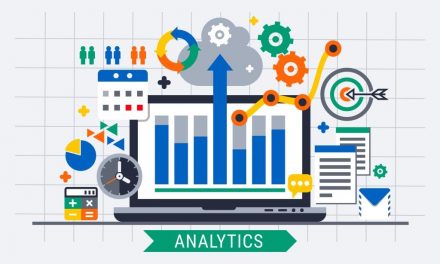We human beings communicate every day. We talk with our neighbours. We cry with our loved ones. And we complain when the weather is bad…but have you ever wondered how computers manage to communicate between themselves? This article will explain serial communication and parallel communication. Serial and parallel communication are important in transmitting data between digital devices.
Table of Contents
Data transmission
This refers to the process in which data is transferred between two or more digital devices. Data is transferred in the form of binary digits between two or more digital devices. The data transmission enables the devices, or components within the devices to communicate with each other.
There are two main ways in which data is transmitted between digital devices.
These are methods are:
- Parallel communication and;
- Serial communication
1. Parallel communication
In this method of data transmission, multiple bits, usually 8, are sent simultaneously on different channels within the same cable, or radio path, and synchronized to a clock.
Parallel devices are designed with a wider bus than serial devices. As a result, they can transfer multiple bytes of data at a single moment. This results in the significantly faster speeds in parallel transmission.
This increase in speed, however, is not without its problems. First of all, multiple wires obviously cost more than a single wire, which means Parallel communication automatically gets more costly to implement than Serial communication. In addition, as the parallel cable gets longer, the synchronization timing between the multiple channels becomes more sensitive to distance.
Here are a few other important notes on Parallel communication:
- Data within a computer system is transmitted via parallel mode on buses. These buses have the width which matches the word size of the computer system.
- Since most data transferred between computer networks is in serial mode, this means there is a need to make a parallel to serial conversion at the computer interface when sending data to and from the network.
- The parallel port is now virtually non-existent on Modern PCs because of the introduction of the Universal Serial Bus.
Main Advantages of Parallel communication
- Parallel communication is able to transmit much more data per unit time than Serial communication.
- Parallel transmission is faster since data flows through multiple lines.
- Some programmers find this process easy to program.
Disadvantages of Parallel communication
- Parallel communication is susceptible to crosstalk due to the multiple lines present.
- The data is more prone to have errors due to the transmission of multiple bits at one given time.
- Parallel communication is unreliable and complicated for long distance communication.
Note: The Word Size refers to the number of bits processed by a computer’s CPU in on go e.g. my computer’s word size is 64 bits.
Examples of parallel interfaces include: ISA, ATA, PCI, SCSI, IEEE-488
2. Serial Communication
In this method of data transmission, the data bit flows from the sender to the receiver, in bi-direction. One bit flows at one clock pulse. 8 bits are usually transferred at a time on the same channel (wire).
This therefore means that although Serial communication may be cheaper than Parallel communication, the transmission speed will be much slower. In addition to this, there is need for overhead time as bits need to be assembled and sent by the sender and then disassembled by the receiver.
Serial transmission is divided into two main groups – Synchronous and Asynchronous communication. In Synchronous transmission, the groups of bits are combined into frames, and frames are sent on a continuous basis with or without data be transmitted.
In asynchronous transmission, groups of bits are sent as independent units with start flags – denoted by a “0” and stop flags denoted by a “1.” There is no data link synchronization to allow for arbitrary size gaps between frames. The start or stop bits maintain physical bit level synchronization once detected.
Here are a few other important notes on Serial communication
- In Serial communication, the data is sent sequentially and latched up at the receiving end, thus, obtaining the entire data from the data bus using the USART/UART (Universal Synchronous Asynchronous Receiver Transmitter). This results in data capture without any loss in synchronization. In Parallel communication however, if just one wire has a delay, the received data will be faulty.
- Serial communication gives an option to increase the transmission frequency without affecting the data. This cannot be done with Parallel communication. The window for data collection at the receiving end reduces with every step increase in the frequency. This eventually results in gibberish data.
Main advantages of Serial Communication
- Serial transmission requires just one line to send data, unlike parallel transmission which needs multiple lines to send data.
- There are fewer errors in serial transmission since data is transmitted one bit at a time.
- Cables used in serial transmission are thinner, longer and much more economical when compared to the cables used in parallel transmission.
- This method of data transmission is reliable and relatively straightforward.
Disadvantages of Serial communication
- Serial communication is much slower than Parallel communication. This makes it unsuitable for use in applications that have large volumes of data that needs to be processed urgently e.g. in a computer, using Serial communication for the buses would not be a good idea.
Uses
COM connectors in laptops use Serial communication. Ethernet, Inter-Integrated Circuit (I2C), Serial Peripheral Interface (SPI) and UART/USART all use the Serial communication protocol.
The RS232 also uses UART.
Improvements
In order to address the distance limitations of Serial communication via RS232, various transmission standards have been developed. These include RS-449, V.35, Universal Serial Bus (USB), and IEEE-1394 (Firewire). Each of these standards have different characteristics.
Conclusion
Both Serial and Parallel transmission have their merits and demerits. Parallel communication is best suited for applications in which a large amount of data is present, which is time sensitive and needs to be sent quickly. Serial communication, on the other hand, is most preferable for long distances due to its reliability and lower susceptibility to cross talk.
I hope you now understand how these marvellous machines that we call computers communicate with each other.





